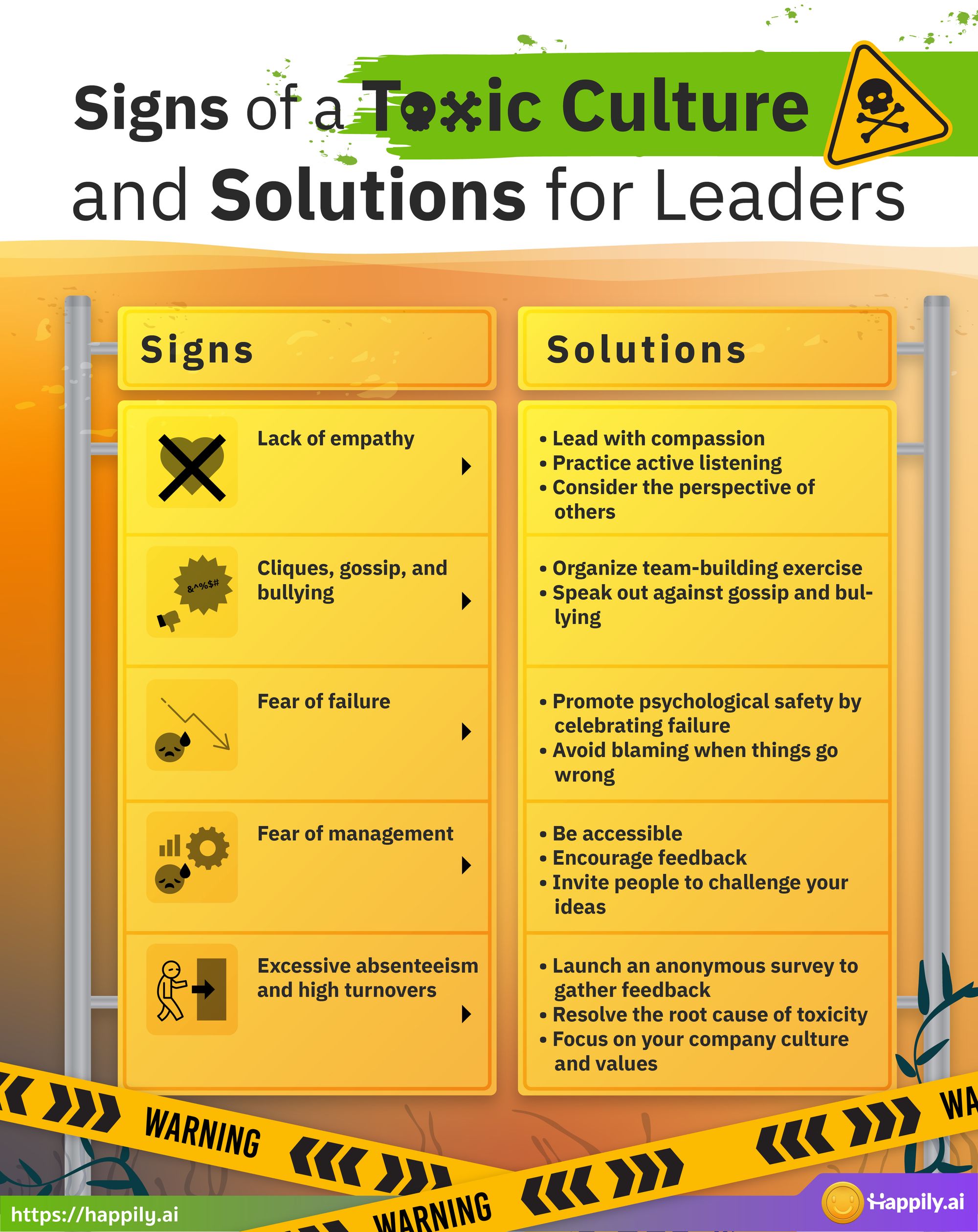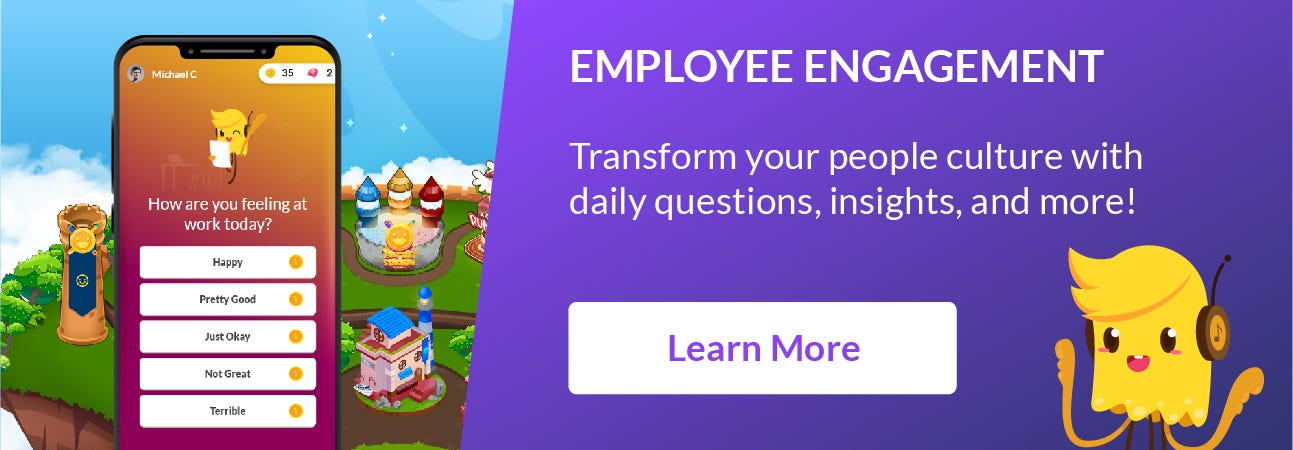“People don’t leave jobs. They leave toxic workplace cultures”. – Dr. Amina Aitsi-Selmi
Organizational culture is a key factor in recruiting and retaining talent. A healthy culture keeps, nurtures, and empowers talent, while a toxic culture drives them away. Organizational culture also has a profound impact on employee well-being. Employees who fit in with the company culture have better well-being and higher performance. If you start to see team conflicts, infighting, demotivated or disengaged employees, there may be something wrong with your company culture.
For most employees, dealing with others or their work environment is more difficult than being assigned a challenging task, especially when the company has a toxic culture. (Find out if you have a Toxic Work Culture Here). A survey by the Society for Human Resource Management found that 72% of leaders believe their company culture has improved since the start of the pandemic. Unfortunately, employees disagree. Some behaviors that lead to a toxic culture are easily identified, but others can be unclear, hidden under the surface, and difficult to tackle. Most people are not aware of their own toxic behaviors. Moreover, people who experience toxic behaviors usually feel uncomfortable speaking out.
Signs of a toxic culture
Leaders are often too busy working on other urgent matters (or putting out fires) that they have no time to deal with workplace toxicity. They remain unaware of prevalent toxic behaviors. It is vital for leaders to be attentive to destructive behaviors that become the norm and harm company culture. If you are unsure whether your organization has a toxic culture, here are some of the signs to look out for and how to fix them.

Lack of empathy
Key indicator(s)
Empathy is a people skill expressed by understanding the feelings of others and acting accordingly. Employees who lack empathy often disregard their coworkers’ opinions, thoughts, and feelings, and can stem from hyper-competitiveness, an employee’s need to constantly prove themselves, and drive to always win. Consequently is an atmosphere of fear, mistrust, and rivalry.
Solution
Leaders must lead with compassion, becoming a role model for prioritizing the feelings of others in the actions we take. Practice active listening. When making important decisions, consider the perspective of others. By practicing empathy, your employees will learn how, and will do the same.
Cliques, gossip, and bullying
Key indicator(s)
Workplace relationships become problematic when friendship is divisive. A toxic culture emerges when employees form cliques full of gossip, judgment, tension, and even bullying, which results in psychological burnout, stress, and depression. Employees will work against one another, negatively impacting collaboration and productivity.
Solution
Organize team-building exercise and have a clear stance on gossip and bullying. Team building exercises help employees form connections with people outside of their own cliques. Activities that require employees to brainstorm and work together to problem solve can strengthen social relationships. And as a leader, speak out against gossip and bullying. Ignoring it means that you choose to tolerate those behaviors in your workplace.
Fear of failure
Key indicator(s)
Fear of failure often occurs when failure is punished or frowned upon. When people are admonished or punished for their mistakes, employees will view failure with shame instead of the opportunity to learn and grow. Fear of failure contributes to a lack of psychological safety, preventing employees from taking risks. This limits the organization’s ability to innovate.
Solution
Promote psychological safety by openly speaking about and celebrating failures. When things go wrong, avoid blaming and instead encourage employees to reflect on why the failure occurred and what they’ve learned. This enables employees to view failure as growth opportunities and helps prevent the same mistakes from happening again.
Fear of Management
Key indicator(s)
Fear of management is a sense of unease among employees when leaders are around. It produces unhealthy behaviors such as avoidance, apprehension, and passive obedience. When employees are too afraid to speak up, they follow their managers’ misguided instructions without questioning. No one is willing to provide feedback that isn’t anonymous. This leads to employees working in a constant state of anxiety and disengagement.
Solution
Be accessible, encourage feedback, and invite people to challenge your ideas. Regularly ask for feedback from your employees. After receiving employee feedback, acknowledge the feedback, and if appropriate, accept your shortcomings and be willing to reevaluate yourself. Take every opportunity to show that the best idea in the room wins, and it doesn’t have to be your idea.
Excessive absenteeism and high turnovers
Key indicator(s)
Excessive absenteeism and high turnover rates are clear indicators of a toxic culture. It is understandable for employees to leave when they feel their role isn’t right for them. But if you are consistently seeing newly hired employees leave after a short time at your company, there must be something wrong. According to SHRM, culture is the main reason employees leave their company.
Solution
Identify and resolve the root cause of toxicity. As a start, launch an anonymous employee satisfaction and engagement survey. Gather feedback about why people may be leaving your organization, and how we can work together to improve the workplace. Focus on your company culture and values to reinforce positive behaviors and eliminate negative behaviors.
Conclusion
A toxic culture has negative consequences both on the employees and the organization. By correctly addressing the problem areas, organizations will benefit from reduced hiring and training costs and higher employee retention, especially of key talent. To establish a healthy culture, leaders must effectively identify and eliminate toxic behaviors while reinforcing positive actions that promote trust, respect, empathy, and support for others.

References
[3] https://www.atlassian.com/blog/teamwork/toxic-work-culture
[4] https://hbr.org/2019/04/keep-your-companys-toxic-culture-from-infecting-your-team
[5] https://www.fastcompany.com/3023318/how-to-overcome-the-6-most-toxic-employee-behaviors
[7] https://www.picked.ai/magazine/how-to-tell-if-your-work-culture-is-toxic-how-to-change-it/
[8] https://employmenthero.com/blog/7-signs-of-a-toxic-workplace-culture/
[9] https://www.livingroomanalytics.com/6-worrying-signs-of-a-toxic-workplace-community









